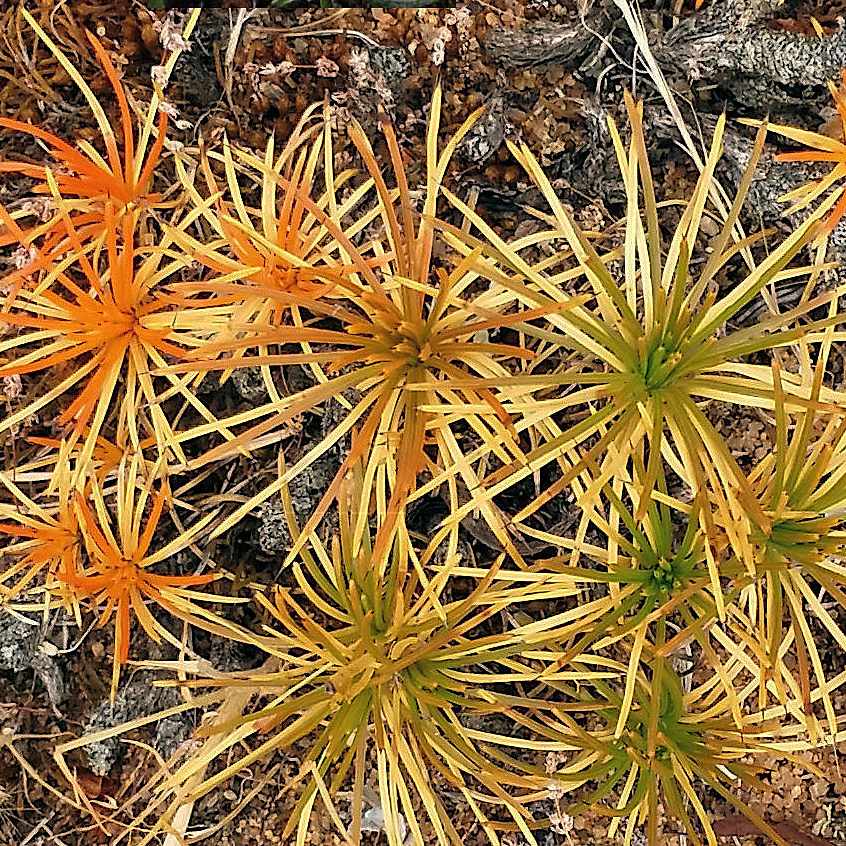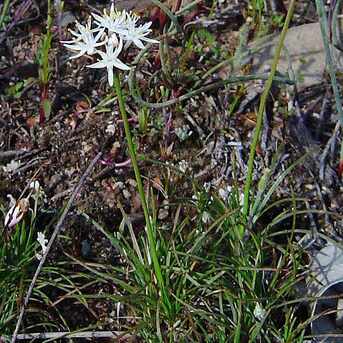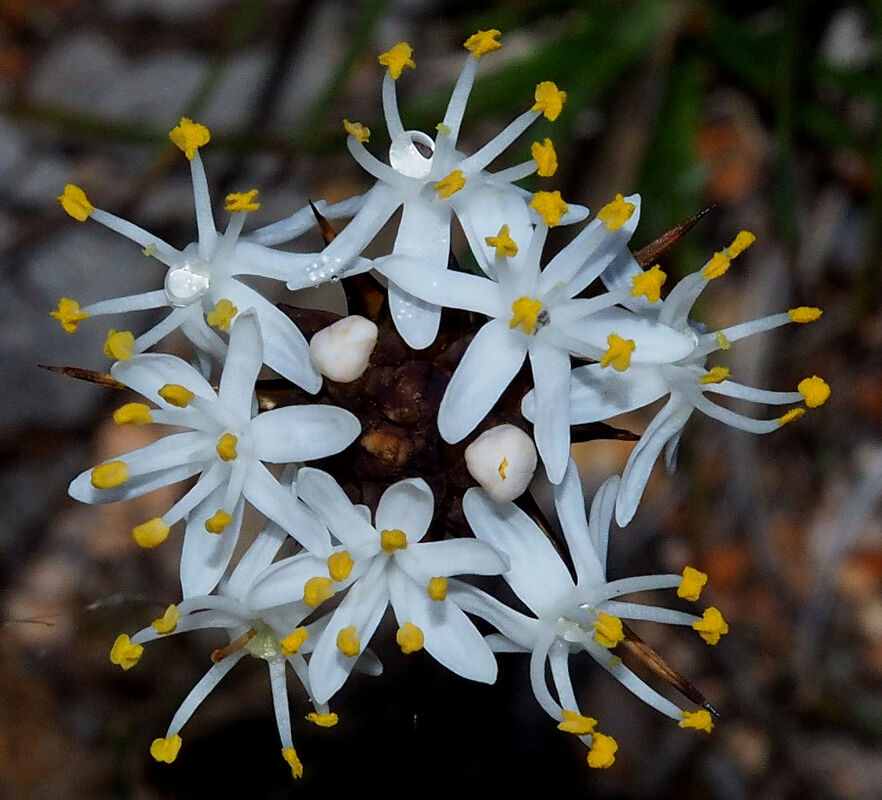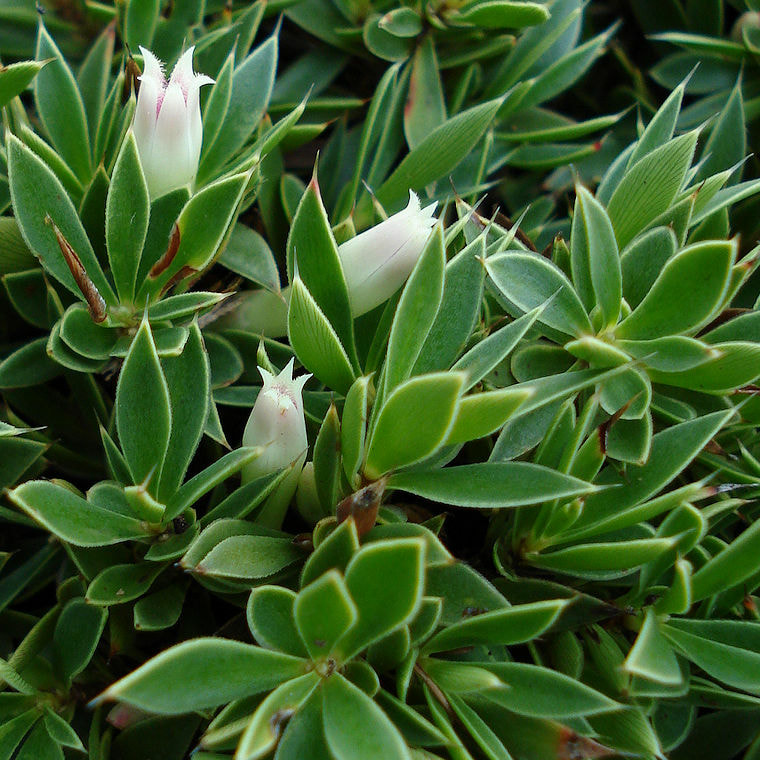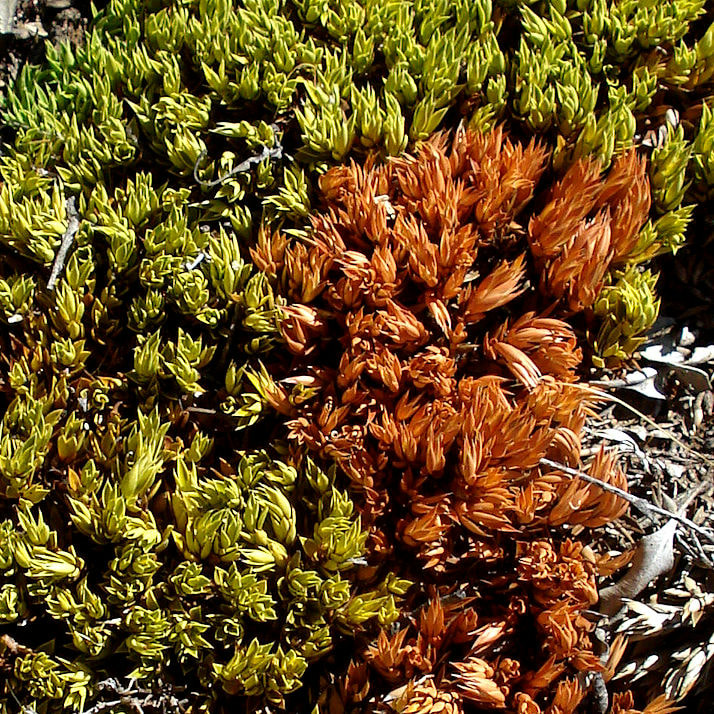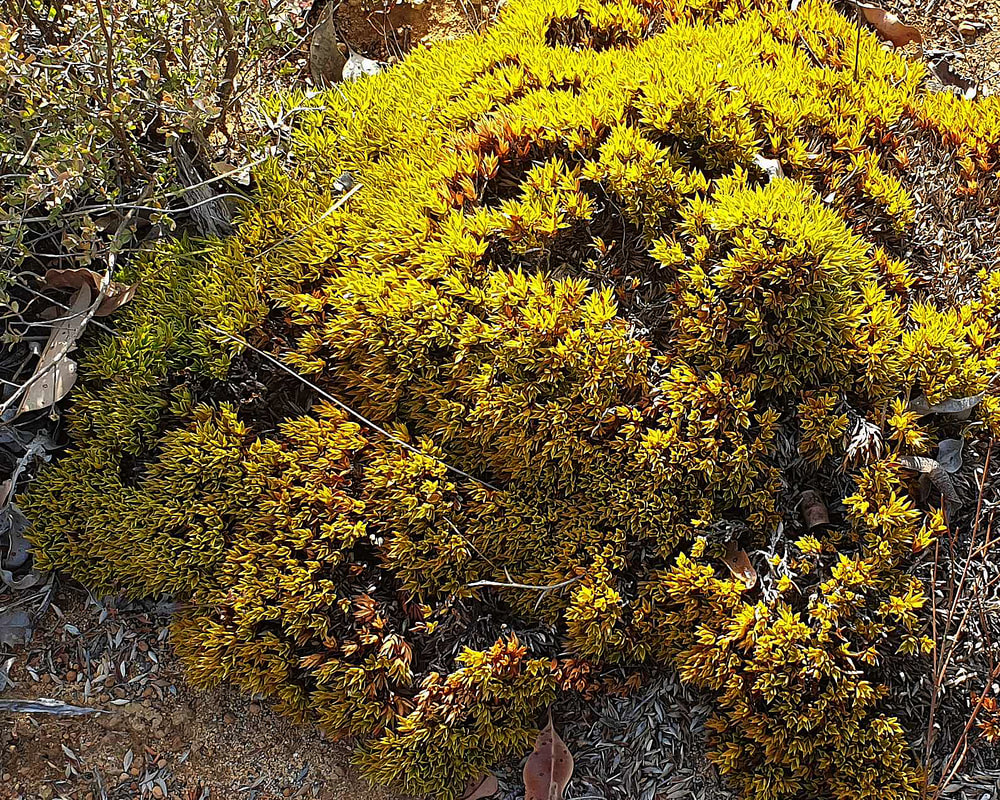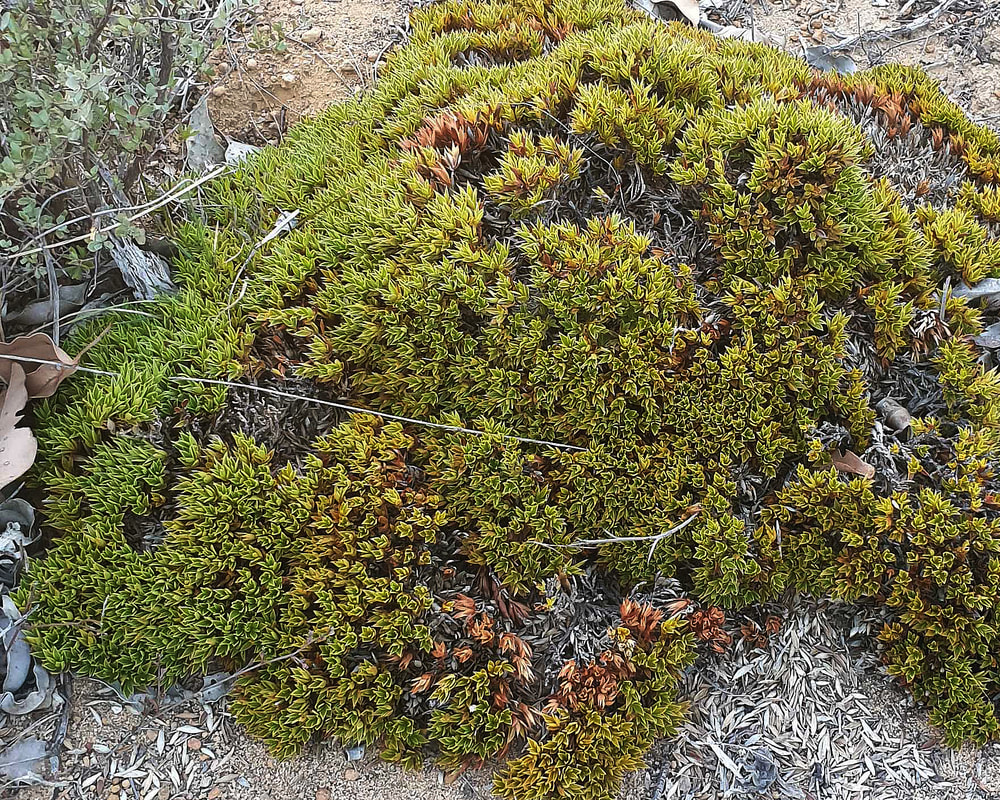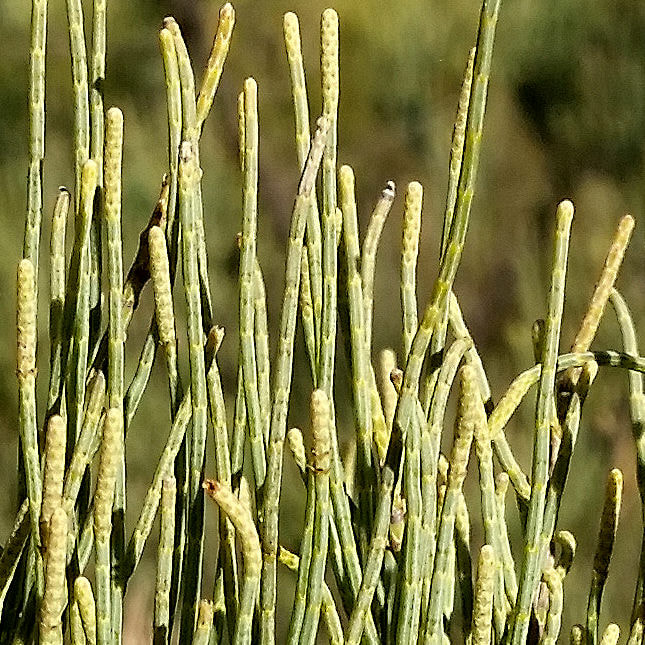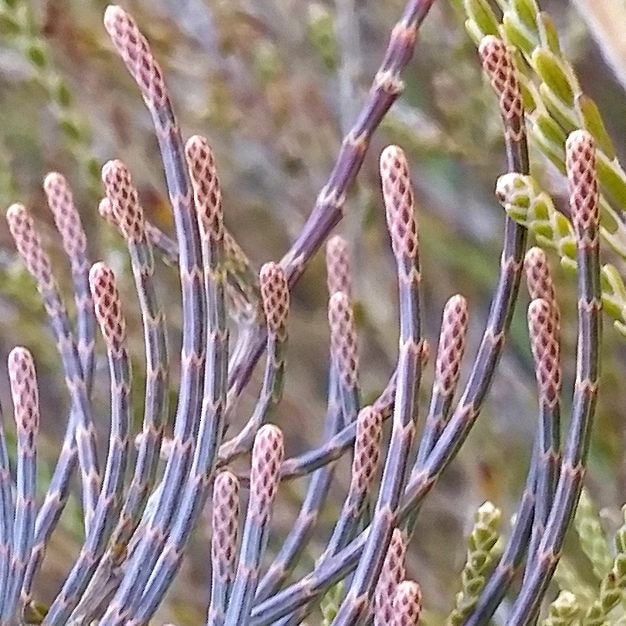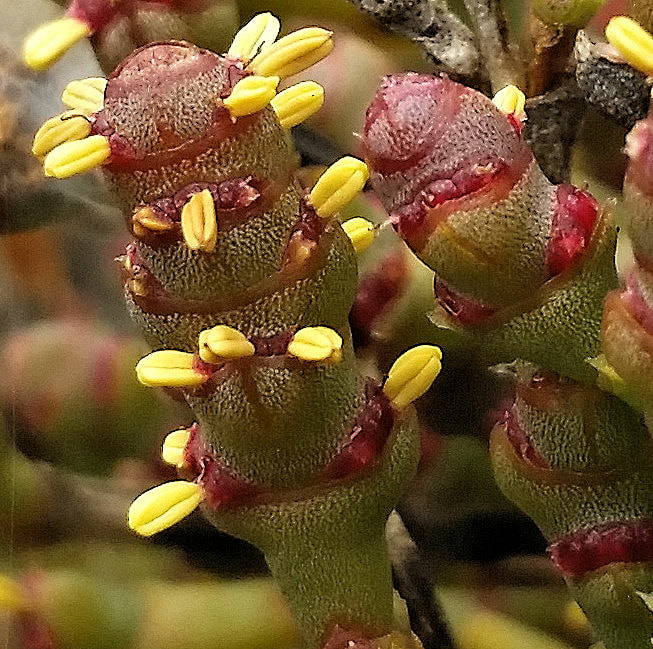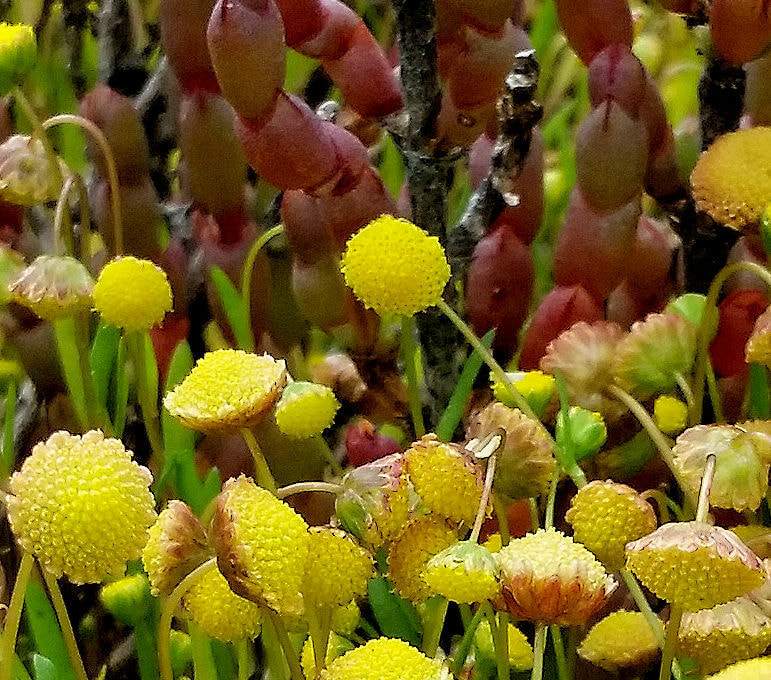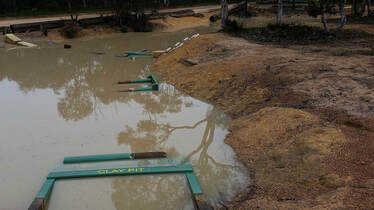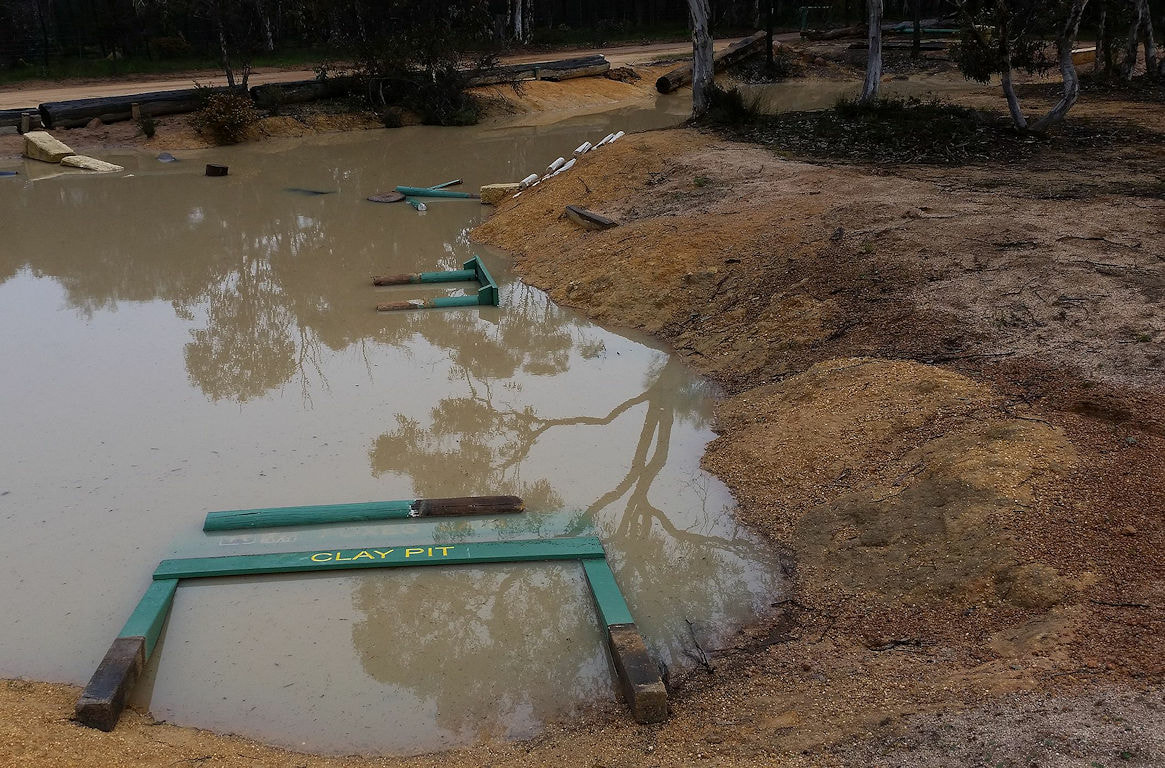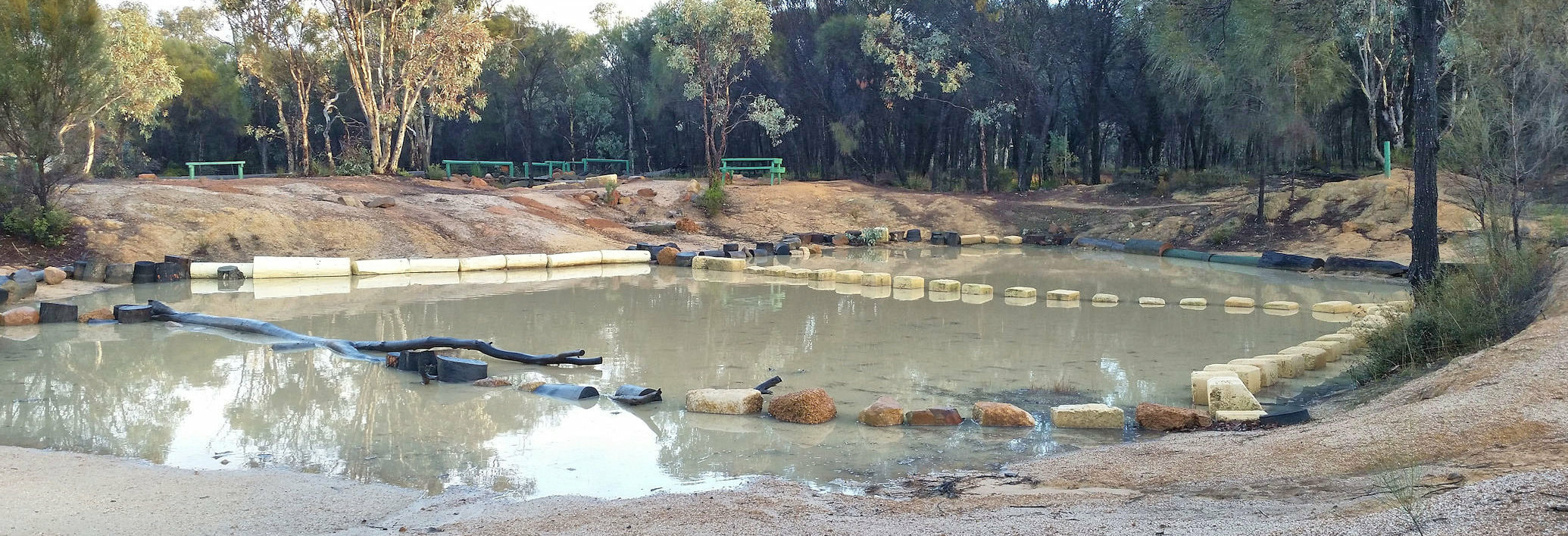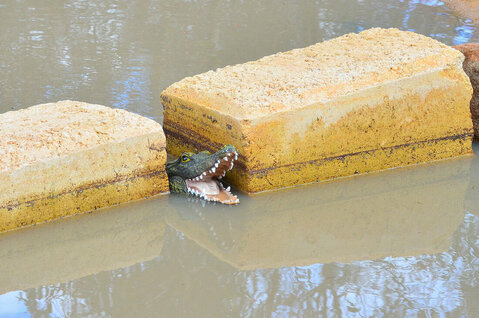There are many plant strategies for coping with our seasonal droughts.
Each November marri trees drop some leaves to reduce their water use, and orchids survive as twin underground bulbs.
True specialists are resurrection plants, which completely dry out but, become green and active within days of rain. Examples are lichens (OK not plants) and Borya species, “pincushion plants" mostly found in soil on granite rocks
The compact bush tucker plant kickbush (Astroloma acervatum) is a good example
Random comment – why do taxonomists use the Latin word humilis for smaller?
As a person of moderate stature, I consider this heightist bias, and feel no humility towards my larger brethren (poor souls).
Have you ever wondered why Australia has no cacti and few succulents compared to other countries?
Succulent plants rely on salts in their cells to retain large amounts of water. Their evolution has not been favoured on most of our soils which have formed on leached and weathered materials, except in saline basins where one finds salt tolerant succulents like bluebush, pigface, and samphire.
